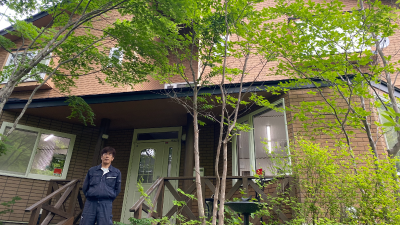ENEOS Renewable Energy Management Corporation
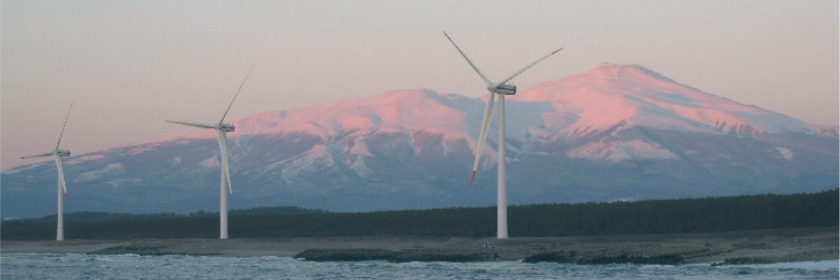
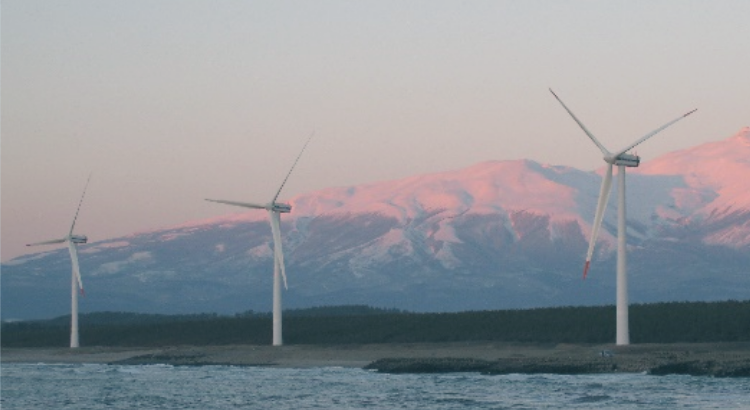
The Sakata Office manages wind power plants and solar power plants. Having been born and raised in the local region, they are confident that they have the physical strength and experience required to carry out their duties. Some of them often visit other sites operated by the Group to help conduct facility inspections. With the help of local firms, they carry out inspections and maintenance on the wind turbine bodies and electric equipment.
With a population of approximately 100,000, Sakata City is located in an area situated in the north-west of Yamagata Prefecture called the Shonai Region. Surrounded by the Sea of Japan to the west, Dewafuji (Mt. Chokai) to the north, and Dewa Sanzan (three sacred mountains) to the southeast, Sakata City can be found in the Shonai Plain, where the Mogami River, also known as the mother river of the prefecture, runs through. The area is blessed with rich agricultural products and marine foodstuffs from the Sea of Japan and is also known for its production of especially delicious rice and sake.
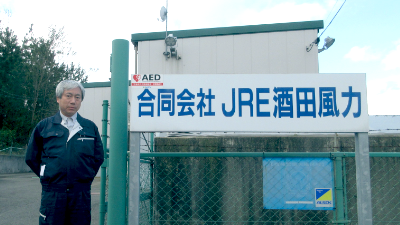

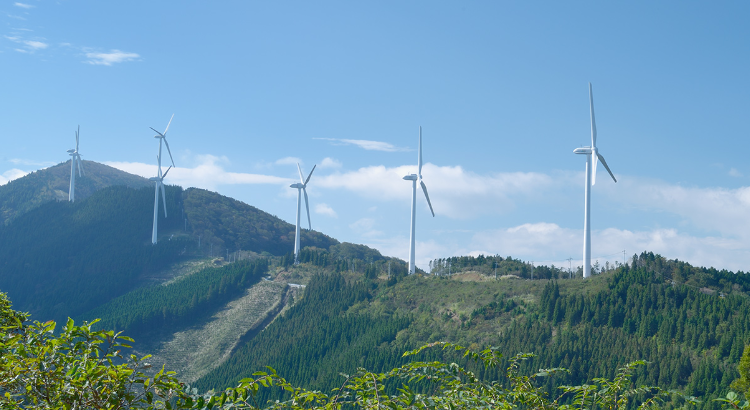
Miyazaki is located in the center of Kyushu. Eight wind turbine units (2000 kW × 8) have been installed along the ridge of Onitayama. The office members employed in this local area carry out maintenance on the wind turbines. Their work mainly involves management and maintenance of the wind farms and the provision of tours for members of the local community.
Miyazaki Wind Farm is located between Gokase Town and Morotsuka Village in Miyazaki Prefecture. As this area is located at high altitude, it is cool in the summer and snow falls in the winter despite it being in Miyazaki. Home to the southernmost ski slope in Kyushu, Gokase Town produces wine made 100% from local grapes as well as Kamairicha (a type of tea that is made using the roast and roll method). Morotsuka Village is the first to begin its mountaineering season in Japan every year, and it is crowded with large numbers of hikers enjoying the blooming Akebono azaleas. It also produces shiitake mushrooms.
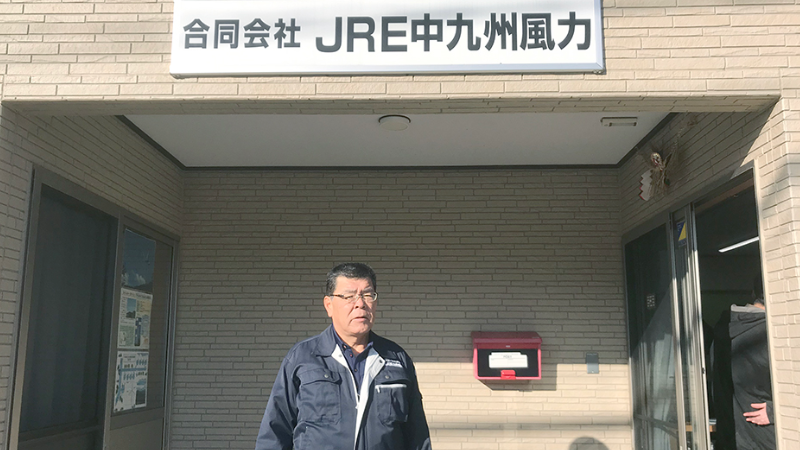
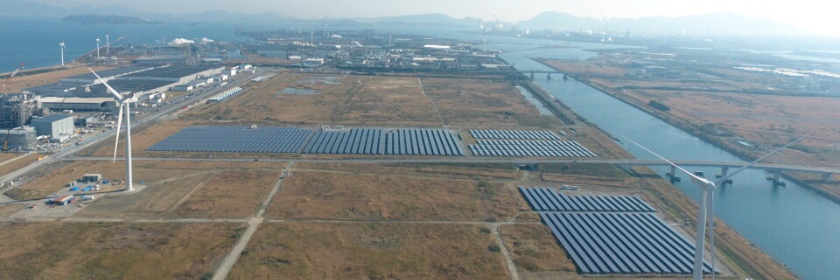
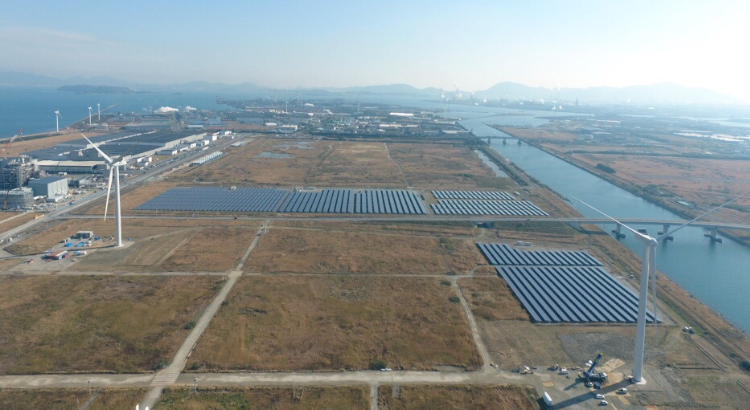
Two members of staff are stationed at our Hibikinada Office to manage the wind and solar power plants there. Maintenance of these plants is currently conducted mainly by the O&M firm. However, the staff are now learning new skills every day with the aim of being able to carry out the maintenance on their own in the future. We will contribute to creating a carbon-free society under the slogan of “Change the world with renewable energy.”
Hibikinada district, where wind turbines have been installed, was designated as the first Kitakyushu Next-generation Energy Park by the Ministry of Economy, Trade and Industry. Visitors can experience wind, solar, and various other types of power generation and learn about our latest initiatives. The whole district is aiming to become an attraction spot where nature and industry coexist harmoniously. We will continue contributing to the reduction of greenhouse gas emissions.
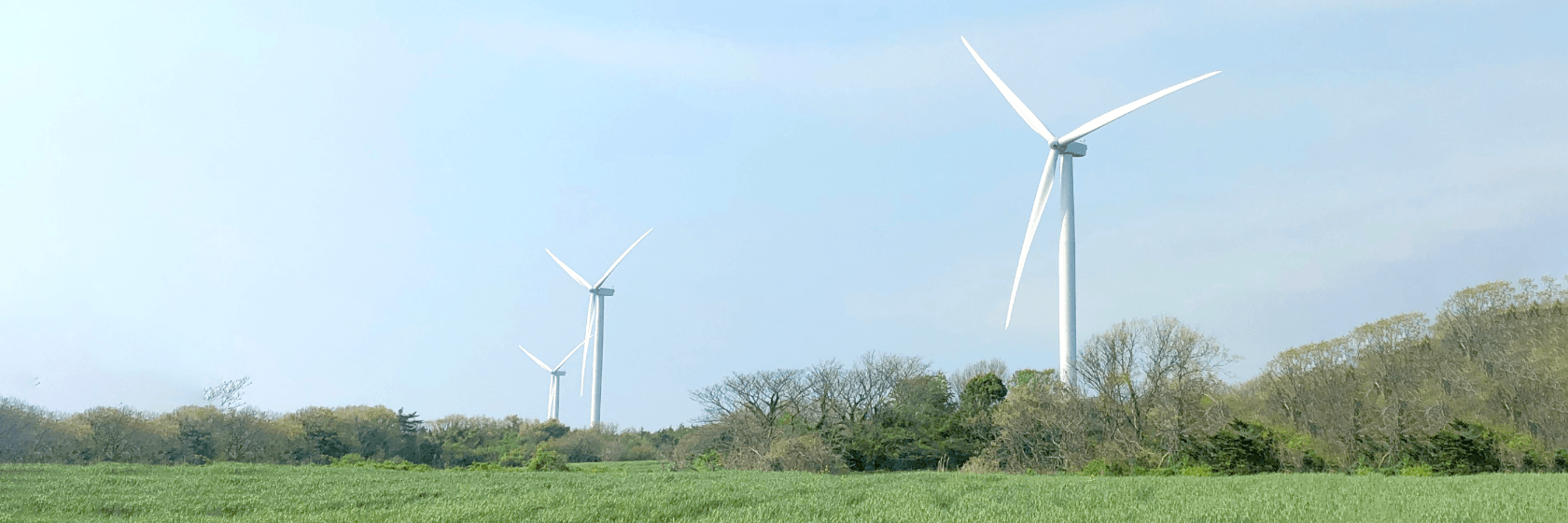
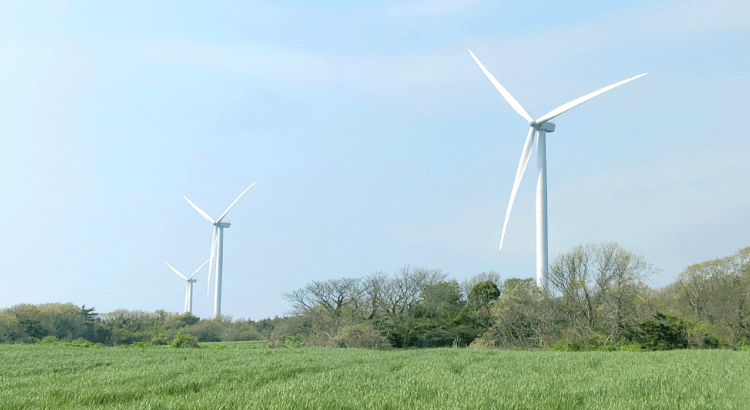
Two members of staff are stationed at our Shika Saikai Office to manage the wind farm there. Given the area’s rich natural environment, they sometimes encounter raccoon dogs, boars, deer, and other wild animals near the office. Although the interconnected substation is situated at a remote location, the wind turbines can be seen from the office. With the support of staff members from other Group sites, the staff stationed here are delivering new results every day.
Located along the Noto Peninsula, the Sotoura Coast and the Uchiura Coast have contrasting geological characteristics. The Sotoura Coast features violent sea waves caused by strong winds from the continent as well as coastal lines with sheer precipitous cliffs, while the Uchiura Coast features coves with comparatively calm seas since the winds are blocked there. Shika Town, located along the Sotoura Coast, is home to a sandy beach called Masuhoura-kaigan. Also, you can view Mt. Takatsume (height: 341 m), the local version of Mt. Fuji, from this town.
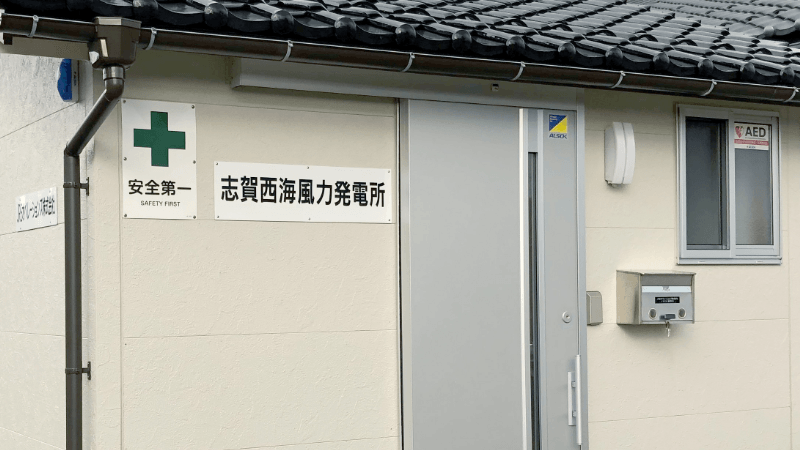
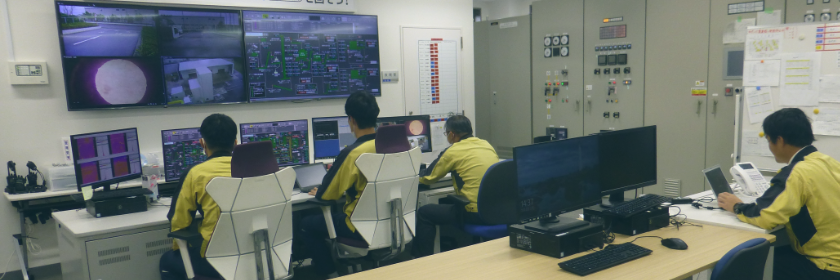
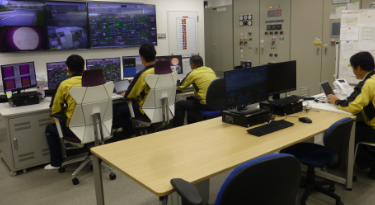
The 22 employees who operate and manage this biomass power plant do so on a double-shift basis. When problems occur, as many staff members as possible are called in, regardless of whether it is night or day, to ensure that the power generation is not interrupted. All of the employees are committed to protecting the plant. However, the plant is shut down for two to three weeks during the regular inspections held twice a year to implement problem prevention measures so that normal operations may be continued.
Home to approximately 160 companies and 22,000 employees and with a history of approximately 50 years, Kamisu City is the largest industrial area in Ibaraki Prefecture. In light of the recent promotion of renewable energy, more and more wind, solar, and biomass power plants are being constructed. Many people are also engaged in agriculture and fishery, so this city has a good balance of agriculture, fishery, industry, and renewable energy generation. The marine products that the area is well known for are Kashima octopuses and clams.
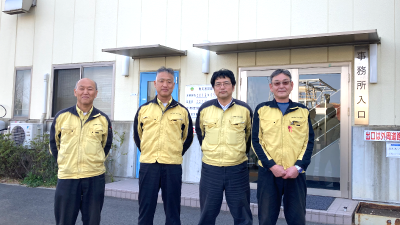
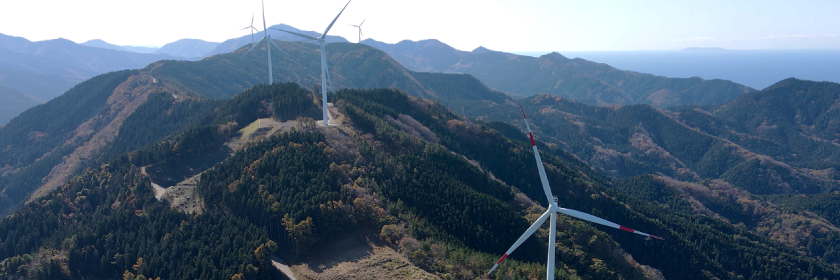
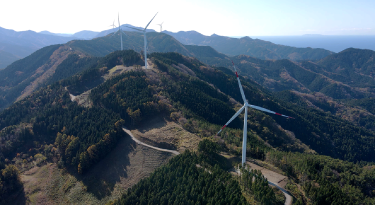
Two members of staff are stationed at our Tsuruoka Hachimoriyama Office to manage the wind turbines and interconnected substation. Regular maintenance and inspection of the turbines is performed by the manufacturer Siemens, while regular inspections of the substation are performed by the staff together with electrical engineers. The substation forwards the power from the turbines on to the transmission network, so regular maintenance to prevent faults and failures is very important. We are committed to introducing new forms of renewable technology that will help to achieve the rapid decarbonization of society.
Tsuruoka City is a former castle town of approximately 130,000 people situated on the Japan Sea, in the
southern part of the Shonai Region of northwestern Yamagata Prefecture. It is surrounded by farms and
forests, with a coastline known for spectacular sunsets. It also boasts world-class research facilities
featuring the latest technology. In this way, Tsuruoka City combines natural beauty, industrial prowess
and cultural attractions.
In the southeast part of the Shonai Plain are Mt. Haguro, Mt. Gassan and Mt. Yudono, collectively known
as the Dewa Sanzan. These three mountains have been revered as sacred since ancient times. Nearby is the
Mogami River, considered to be the “mother river” of Yamagata Prefecture, is renowned as one of the
three fastest rivers in Japan. The region is rooted in a traditional food culture that has been
utilizing the ingredients nurtured by nature’s bounteous blessings. Today, the people of Tsuruoka
maintain a strong affinity with nature and respect for the natural environment.
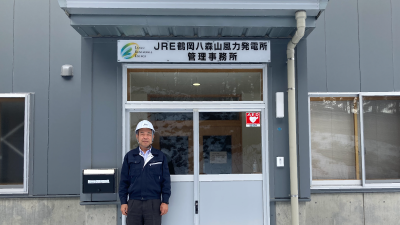
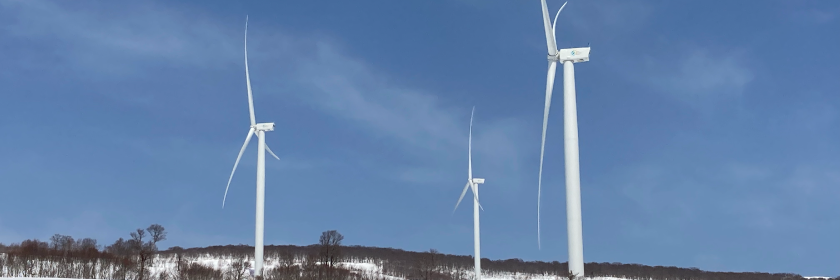
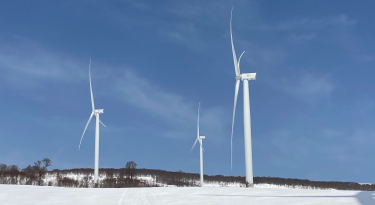
JRE Shichinohe Towada Wind Farm has power plant-related facilities in three municipalities: Aomori City, Towada City, and Shichinohe Town. The office manages and maintains eight wind turbines and a substation. Aomori Prefecture has developed an energy industry promotion plan for the prefecture to further the creation of a sustainable, low-carbon society. To play our part in this plan, we strive to operate the wind farm in a way that is closely connected to and supportive of the local community while working to contribute to the decarbonization of society.
Aomori City is in central Aomori Prefecture. It has a population of three hundred thousand people and is
among the snowiest cities in the world. In addition to beautiful natural features, such as the Hakkoda
Mountains and Mutsu Bay, and an abundant variety of foods, including apples and scallops, the city is
rich in culture and history. The Aomori Nebuta, one of Japan’s most famous festivals, and important
archeological sites, such as Sannai Maruyama and Komakino, are among the gems that can be found in
Aomori City.
Towada City is in the Nanbu region of inland southeastern Aomori Prefecture. Lake Towada and nearby
Oirase Gorge, which are nationally designated special scenic spots and natural monuments, are among the
top tourist destinations of the Tohoku region. As a national park and wildlife protection area, the Lake
Towada area is a place where the flora, fauna, and scenery of the natural environment are carefully
safeguarded in their natural state.
Shichinohe is a leafy town located in the gently rolling foothills east of the Hakkoda Mountains. Many
crops grow well there due to the clean water and rich soil. The vegetables are fresh and delicious and a
variety of delicacies, such as Japanese beef and local sake, are available. The town is conveniently
located about three hours from Tokyo station by Shinkansen bullet train and 50 minutes by car from
Aomori City and Hachinohe City.
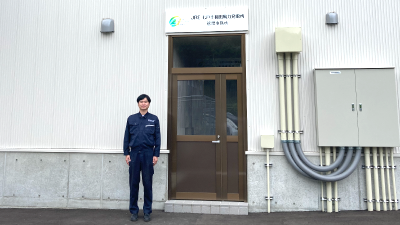
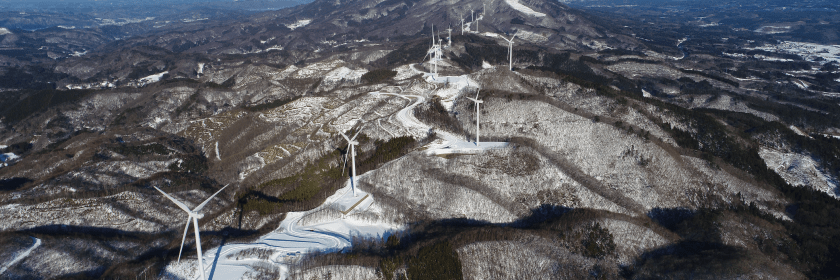
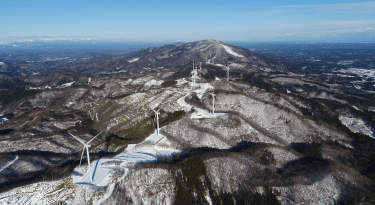
JRE Oritsumedake South 1 Wind Farm has power plant-related facilities in three municipalities: Ninohe City,
Ichinohe Town, and Kunohe Village. The office manages and maintains 13 wind turbines and a substation.
We are implementing various initiatives to contribute to the local community in the municipalities where the
wind farm is located. As we continue to operate the wind farm in a way that is deeply connected to the
community, we will contribute to the decarbonization of society through renewable energy power plant
development.
Ninohe City is located on the northern edge of inland Iwate Prefecture. It has a Shinkansen bullet train
station making it easy to travel there from Tokyo. The residents of the area have inherited many
treasures from their ancestors, including traditional crafts and industries as well as food culture. For
example, Joboji lacquerware is finished with high quality lacquer collected by lacquer tapping artisans.
Each item is a masterpiece that becomes ever more interesting the more it is used.
Ichinohe Town has many popular sightseeing spots, including campgrounds that take full advantage of the
natural surroundings and well-appointed multipurpose facilities with large-scale playground equipment.
Traditional crafts, such as Torigoe bamboo work, which is said to have been first brought to the area by
the Buddhist priest Ennin over one thousand years ago during the early Heian period, have been handed
down as part of people’s daily lives and are still practiced in Ichinohe Town.
Over 70% of Kunohe Village is covered in forests and grasslands. Oritsumedake, a mountain that is part
of a prefectural natural park, is known for having the best views in northern Iwate Prefecture. Kunohe
is blessed with culture and traditions, including traditional crafts rooted in the local environment and
local performing arts that continue to be passed down even today. It is also home to many historical
sites such as Kunohe Shrine, which is known for its connection to Kunohe Masazane, a famous warrior of
the Sengoku period.
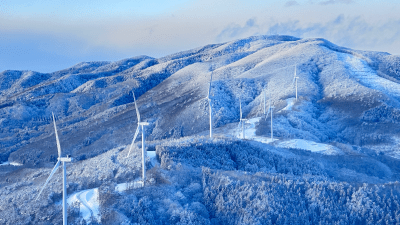
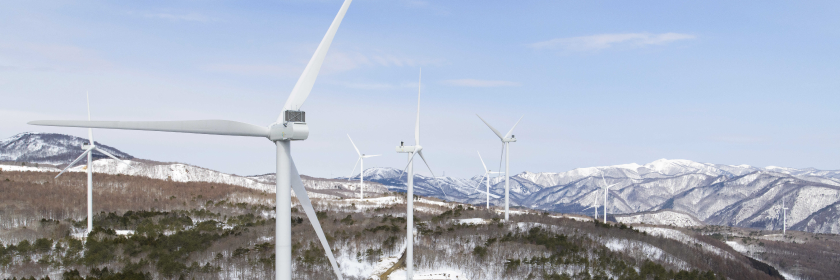
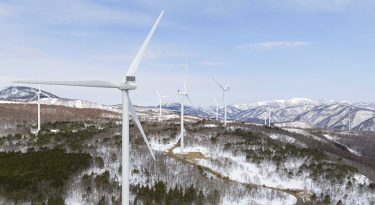
The Azuma Kogen Wind Farm is located in the northwestern part of Fukushima Prefecture, near the border between Fukushima City and Yonezawa City. This office manages and maintains 9 wind turbines and a substation. Fukushima City was recognized as a “Next-Generation Energy Park” on October 30, 2015, by the Agency for Natural Resources and Energy, and this wind farm was also registered as an associated facility in June 2023. At this wind farm, we seek to deepen the public’s understanding of renewable energy by organizing tours of our facilities etc., and we undertake daily preventive maintenance with a view to becoming an environmentally friendly wind farm which supports the local community.
Fukushima City is a former castle town with a population of approximately 280,000, and is famous for its onsens (hot springs) and fruits. The three hot spring towns of Takayu Onsen, a sulfur spring with milky water which offers a mystic bathing experience, the Iizaka Onsen, which is said to have been visited by the renowned Japanese poet, Matsuo Basho, and the Tsuchiyu Onsen, famous for its Kokeshi dolls (a traditional Japanese handicraft) are known as Fukushima’s top three onsens, and attract many onsen enthusiasts. Due to the basin-specific climate with hot summers and cold winters, fruits are widely produced here. The so-called Fruit Line (a moniker for the Prefectural Road Route 5, which spans approximately 14km) lies at the foot of this wind farm, and delicious fruits come into season from mid-June onwards for approximately six months, starting with cherries, followed by peaches, pears, grapes, and apples; many orchards that are open to the public, as well as stalls that sell these fruits, line the route.
